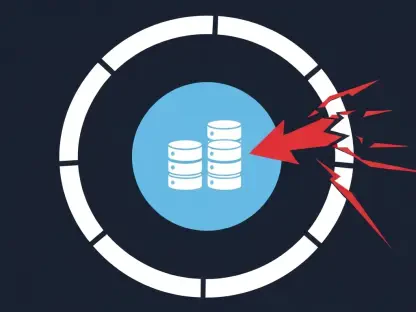In today’s complex financial landscape, predicting stock behavior often requires advanced strategies beyond traditional analytic methods, and game theory emerges as a candidate for such predictive purposes. GitLab Inc., a prominent figure in software development, experienced notable variance recently with regard to its stock market performance, drawing attention to novel approaches in understanding and forecasting these fluctuations. This article explores GitLab’s fiscal outcomes and attempts to apply game theory as a strategic framework for anticipating stock movements amidst evolving investor sentiments. Faced with earnings and revenue figures exceeding expectations alongside a market reaction that appeared dissonant, understanding the factors at play becomes crucial for investors hoping to leverage strategic insights in the future.
GitLab’s Recent Financial Performance
GitLab reported impressive financial results for the first quarter of fiscal year 2026, revealing an earnings per share (EPS) of 17 cents, eclipsing the anticipated 15 cents a share expectation. At the same time, GitLab attained revenue of $214.51 million, outperforming analyst projections of $213.16 million. Despite these positive financial indicators, the company witnessed a drop in stock value following the results announcement, reflecting a less optimistic reaction from investors concerning the guidance for the ensuing quarter. This guidance suggested adjusted EPS expectations between 16 cents and 17 cents for the second quarter—a figure aligning with analysts’ assessments. However, revenue projections ranging from $226 million to $227 million fell marginally short of Wall Street’s expectations of $227.16 million, which resulted in investor dissatisfaction and subsequently a decrease in GitLab’s stock price, highlighting the nuanced nature of market dynamics.
GitLab’s leadership has sought to emphasize the intrinsic value of its core business model despite the immediate market response. The company operates in the specialized sector known as DevSecOps, a domain dedicated to enhancing software delivery by intertwining development, security, and operations into a unified platform. This platform gains additional enrichment through the integration of artificial intelligence, which enhances both productivity and security measures. Bill Staples, GitLab’s CEO, highlighted the importance of their AI-driven DevSecOps platform in enabling developers to innovate faster and with more efficiency, underscoring the value proposition that GitLab presents amidst volatile market conditions. Consequently, this narrative raises questions regarding the broader implications of adopting game theory in predicting stock behavior given the nuanced dynamics inherent to GitLab’s operational context.
Game Theory as a Predictive Framework
Within the realm of financial trading, applied game theory presents intriguing opportunities to develop robust strategies, particularly when fundamental narratives fall short in their specificity. The central premise lies in understanding an investor’s decision to buy securities, which hinges more on collective market actions rather than individual opinions regarding specific news events. This perspective shifts the analytical focus to market breadth, consisting of sequences of accumulative and distributive sessions. Such an approach allows for an exploration of patterns and mechanisms governing stock movements more effectively than traditional fundamental analysis that prioritizes price or its direct derivatives as key evaluation metrics. Consequently, game theory emerges as a powerful tool for navigating competitive environments characterized by uncertainty and diverse actions from various market participants.
The article draws parallels from card-counting strategies in blackjack, where professional players employ a running count system categorizing cards into three value groups: negative, neutral, and positive. The principle underlying successful card counting involves betting heavily when odds favor the player and conservatively against adverse scenarios, relying on calculating derivative and conditional probabilities. Applied game theory in stock forecasting potentially adapts similar strategies, aimed at understanding market dynamics through probabilities associated with discrete states. Instead of focusing predominantly on price movements, the proposed strategy centers on evaluating demand profiles and probability transitions from one behavioral state to another, offering fresh insights into understanding stock market behavior under variable conditions.
Analyzing Current GTLB Stock Scenarios
Currently, GTLB stock exhibits a “3-7-D” sequence, representing three weeks of upward trajectory followed by seven weeks of downward movement, cumulatively resulting in a negative 10-week period. Analysis of such sequences, tied to market breadth and potential behavioral states, enables a comprehensive understanding and evaluation of demand profiles from a probabilistic standpoint. The historical emergence of the 3-7-D sequence observed 21 instances since January 2019, with 62% of subsequent weeks generating positive price movement. On average, trading weeks associated with this sequence show a median return of 7.04%, signaling potential opportunities for investors to engage with carefully crafted trading strategies underscoring buy-the-dip tendencies and shifting sentiment regimes amidst prevailing dynamics in the GitLab stock market.
Assuming GTLB stock closes at $45 by the end of the week, projections suggest an anticipated rise beyond $48, possibly achievable within the ensuing weeks. Market intelligence posits that the 45/47 bull call spread expiring by July 25 offers significant promise, involving the purchase of a $45 call and simultaneous sale of a $47 call, resulting in a net debit of $90. If the stock surpasses $47 by expiration, a maximum return of $110—a robust payout of 122%—beckons. The attractiveness of this projection lies in sentiment shifts that offset typical negative biases affecting GTLB stock, substantiated by the favorable probabilities accompanying the outlined 3-7-D sequence, urging stakeholders to consider applied game theory principles for strategic positioning amid fluctuating market sentiments.
Conclusions and Considerations for Investors
GitLab posted strong financial results for the first quarter of fiscal year 2026, reporting earnings per share (EPS) of 17 cents, surpassing the expected 15 cents. Additionally, GitLab achieved revenue of $214.51 million, exceeding analysts’ forecast of $213.16 million. Despite these favorable indicators, GitLab’s stock experienced a decline after the announcement, as investors responded cautiously to the company’s guidance for the next quarter. The projected adjusted EPS for the second quarter was between 16 cents and 17 cents, in line with predictions. However, anticipated revenues of $226 million to $227 million did not meet Wall Street’s expectations of $227.16 million, leading to investor disappointment and a subsequent dip in stock value.
GitLab emphasizes the core value of its business in the DevSecOps field, integrating development, security, and operations. Their platform leverages AI to boost productivity and security, facilitating quicker innovation. CEO Bill Staples underscores this, noting its importance amid market volatility. This scenario poses questions on how game theory could forecast stock movements given GitLab’s unique operational environment.









